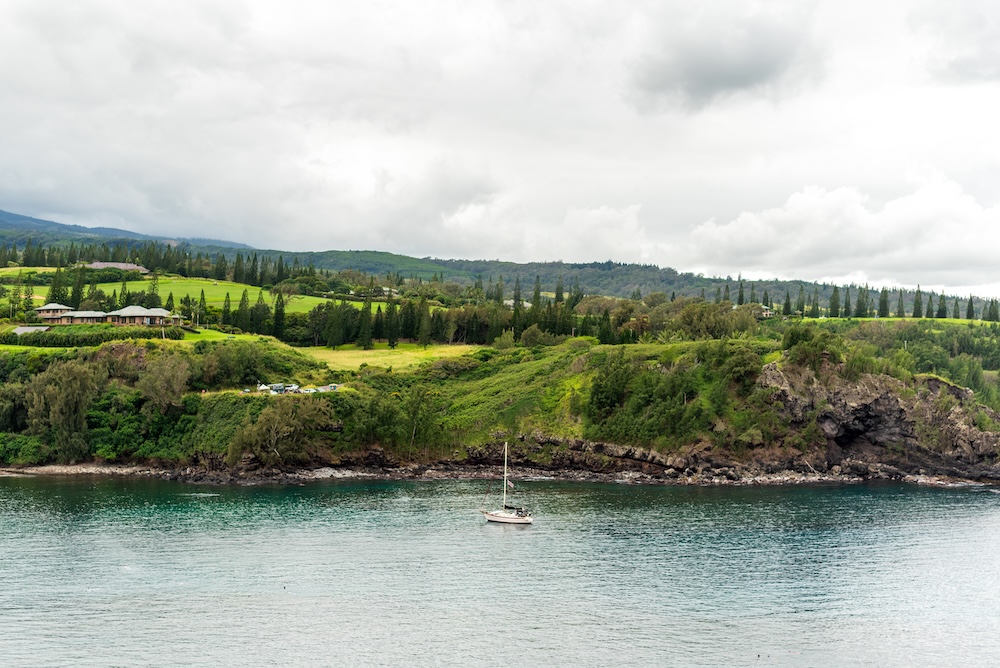In the middle of Lahaina’s smoldering ruins, one house remained almost perfectly intact. While more than 2,200 structures were consumed in the devastating 2023 Maui wildfires, a modest red-roofed home on Front Street stood as a surreal image of survival. News outlets dubbed it the “miracle house.” But the truth behind its survival isn’t magic — it’s smart design, a bit of luck, and the strategic use of river rocks.
As wildfires become more frequent and more ferocious due to climate change, this story has captured the world’s attention for good reason. It shows how something as unassuming as landscaping choices can make the difference between ruin and resilience.
The 2023 Lahaina Fire: One of Hawaii’s Deadliest Disasters
On August 8, 2023, wildfires fueled by dry vegetation, extreme winds from Hurricane Dora, and prolonged drought swept across Maui, tearing through neighborhoods and historic landmarks. Lahaina, a coastal town with deep cultural and historical roots, was nearly wiped off the map. More than 2,200 buildings were destroyed, and the death toll climbed to nearly 100 — making it one of the deadliest wildfires in U.S. history.
But amid the blackened remains of Front Street, aerial images revealed something incredible: a two-story home with a red roof, white walls, and an unscathed lawn. While every neighboring structure was gone, this one house stood — seemingly untouched.
What Made This House Different?
Trip and Dora Millikin had purchased the nearly 100-year-old home on Front Street just one year prior. When they began renovations, they decided to update the landscaping around the property. Instead of using grass or mulch, they replaced the immediate perimeter — the zone closest to the house — with a three-foot-wide band of loose river rock.
According to the Millikins, their intention wasn’t fire defense. They simply wanted to reduce yard maintenance and avoid attracting termites. But that seemingly minor update may have saved their home.
The Power of a Rock Barrier in Wildfire Defense
Experts say the most critical area for wildfire protection is the 0–5 foot zone surrounding a structure. That’s where embers are most likely to land — and where flammable materials like bark mulch, dry plants, or wooden fences can quickly ignite.
In the case of the Lahaina home, that ring of river rocks created a non-combustible buffer. There was nothing for the embers to catch. Combined with a metal roof, minimal surrounding vegetation, and a favorable wind break, the home didn’t offer fire an easy way in.
Michael Wara, director of the Climate and Energy Policy Program at Stanford University, explained that the Millikins’ home likely survived because “the first five feet around the home were clear of flammable vegetation.” It’s a principle deeply rooted in fire science, yet often overlooked — especially in coastal towns where wildfires seem like a distant threat.
Why Embers Matter More Than Flames
It’s not the towering flames that destroy most homes in a wildfire — it’s embers. Carried by wind, these glowing fragments can travel for miles ahead of the fire line. When they land on flammable materials near or on a home, they start spot fires that quickly grow.
That’s why fire agencies across the U.S. — including CAL FIRE and the National Fire Protection Association — stress the importance of defensible space. The first few feet around your home can make the biggest difference.
Rocks don’t burn. Mulch does. That alone could be the difference in a crisis.
What Homeowners Can Learn from This
The “miracle house” is a powerful reminder that small choices matter — even ones made without disaster in mind. Here are some lessons any homeowner, especially in wildfire-prone areas, can take from Lahaina’s survivor:
Clear the Ember Zone
The area within five feet of any structure should be completely non-flammable. That means:
- No bark or wood mulch
- No dead or dry vegetation
- No wooden trellises, fences, or furniture
- No firewood stacks near walls
Use rock, gravel, decomposed granite, or other fire-resistant materials instead.
Choose a Fire-Safe Roof
The Millikin house had a metal roof, which is far more resistant to fire than wood shake or even some asphalt shingles. Roofs are among the most vulnerable parts of any structure in a wildfire.
Keep Landscaping Low and Moisture-Rich
Plants with high moisture content — such as succulents — are less likely to ignite. Avoid plants rich in resins or oils, like juniper or eucalyptus, which act as fuel.
Watch for Connected Fuel Paths
In Lahaina, experts noted that wood fences that connected homes may have allowed fire to spread from house to house like a wick. Breaking those fuel paths with stone, metal, or other non-combustible features can stop fire in its tracks.
Luck Still Played a Role
The Millikins are the first to admit that not everything was in their control. Wind direction, ember behavior, and what happened to nearby properties all played a role. But their choices — intentional or not — gave their home a fighting chance.
Experts stress that no single change guarantees survival. But layered defenses — like the Millikin home’s combination of non-combustible landscaping, a metal roof, and spacing from neighboring buildings — dramatically improve the odds.
Resilience Is Designable
As climate change intensifies wildfire behavior across the globe, fire-safe design isn’t just a smart choice — it’s a necessary one. And it doesn’t always require expensive upgrades. Sometimes, it’s as simple as replacing mulch with stones or trimming trees.
The miracle in Lahaina wasn’t divine intervention. It was a combination of awareness, smart design, and environmental conditions aligning just enough to spare a home. That story is more empowering than magical — because it means we can replicate it.
Final Thoughts
The red-roofed house that survived the Lahaina fire is more than a viral photo — it’s a wake-up call. Fire doesn’t just happen in forests. And resilience doesn’t always mean high-tech systems. Sometimes, survival starts with a shovel, a pile of river rocks, and a bit of foresight.









Reader Interactions